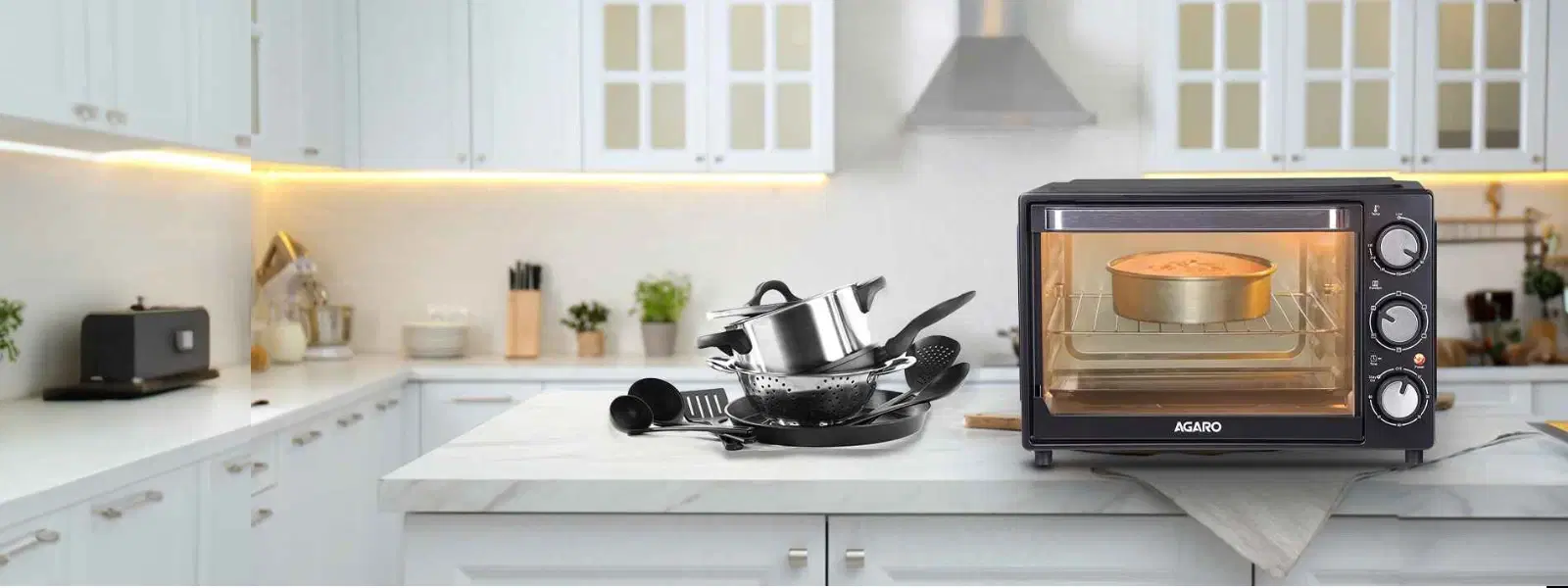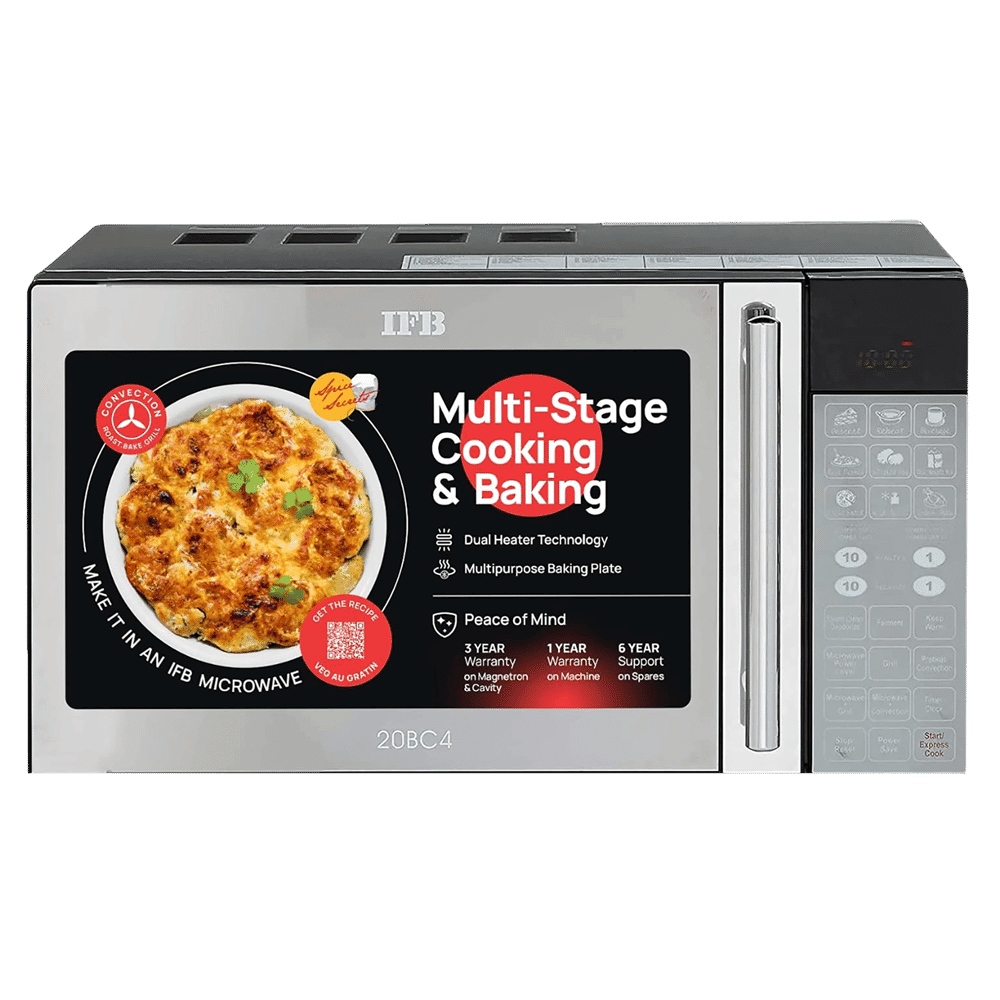
Home Appliances
•04 min read

Buy IFB 30FRC2 30L Convection Microwave Oven with 101 Autocook Menus (Black Floral) online at best prices from Croma. Check product details, reviews & more. Shop now!
Choosing the perfect microwave for your kitchen isn’t just about style—it’s about finding the right size. Microwaves come in a variety of dimensions tailored to different spaces and cooking needs. In this post, we dive into a comprehensive checklist that will help you understand microwave size in inches, from how to measure a microwave correctly to comparing standard sizes. You will emerge with the confidence to select the best microwave size for your kitchen design and cooking habits.
Microwave dimensions can significantly impact the overall functionality and aesthetics of your kitchen. Whether you have a sleek modern setup or a cozy traditional space, choosing the right dimensions means your appliance can integrate seamlessly with existing cabinetry or on your countertop. Correct sizing not only ensures a balanced look but also improves efficiency, as a well-fitted microwave can make daily cooking tasks more enjoyable.
It’s important to be aware of the main types of microwaves and their typical sizes. Countertop models are a common choice for many kitchens, while over-the-range and built-in microwaves offer a more integrated design. Additionally, compact designs are perfect for smaller spaces such as apartments, dorm rooms, or compact kitchens. Each type offers a unique range of measurements to suit varied spatial needs.
Standard microwave dimensions refer to the average measurements found in most models available. For instance, most countertop microwaves measure between 20-24 inches wide, 12-14 inches high, and 16-20 inches deep. Knowing these standard microwave dimensions assists in comparing appliances effectively, ensuring your new addition will fit perfectly in its designated space.
Compact microwave designs are tailored for confined spaces. Typically, these appliances measure around 16-20 inches in width, 10-12 inches in height, and 12-16 inches in depth. Ideal for small kitchens or dorm rooms, they strike a balance between functionality and space-saving design, ensuring that even compact spaces are not deprived of quality technology.

Buy IFB 20L Convection Microwave Oven with 71 Autocook Menus (20BC4, Black) online at best prices from Croma. Check product details, reviews & more. Shop now!
Measuring accurately is key to finding the right appliance. Begin by measuring the width, height, and depth of the space available. Ensure you take into account any clearance required for ventilation which typically means leaving at least 3 inches of space on all sides. Measure twice to avoid errors. In doing so, you'll confirm that the microwave can function optimally without overheating due to restricted airflow.
Cubic footage is a crucial metric for assessing a microwave’s capacity. It is calculated by multiplying the microwave’s internal dimensions. For example, a microwave with 1.2 cubic feet typically matches external measurements of around 20 inches in width, 12 inches in height, and 16 inches in depth. This practical guide allows you to balance capacity with the space available in your kitchen.
Pro Tip from Tata Neu:
When measuring for a new microwave, remember to account for ventilation space. Most microwaves require at least 3 inches of clearance on all sides to ensure proper airflow and prevent overheating.
If your kitchen calls for innovative and space-saving design options, consider models such as low-profile or drawer microwaves. These appliances are designed to maximise functionality without dominating your countertop space. With careful planning, these choices work well with modern kitchens where space is at a premium, yet performance is key. Their compact design ensures that even tight spaces are utilised efficiently.
To simplify your decision-making, it helps to compare dimensions across various types. For instance, countertop microwaves generally offer a generous internal capacity with external dimensions around 20-24 inches wide. Over-the-range models, while typically slightly larger in height to accommodate ventilation and filters, are designed to blend into your kitchen's upper space. Built-in models offer a custom look, and compact options measure as small as 16 inches in width, making them ideal for restricted areas. This comparison enables you to weigh the benefits of each option alongside the space and functionality you desire.

Buy IFB 30L Convection Microwave Oven with 101 Autocook Menus (30BRC3, Black) online at best prices from Croma. Check product details, reviews & more. Shop now!
While microwave size in inches is an essential factor, it’s wise to also consider wattage, available features, and your typical cooking style. A higher wattage provides better cooking performance, helping you heat food faster and more evenly. Additional features such as sensor technology or convection cooking can enhance your overall cooking experience. Ensuring that these elements meet your requirements is crucial for a balanced decision.
Remember that every kitchen and cooking style is unique. When looking at microwave sizes, also factor in essential elements like wattage and special features. A robust appliance can make a significant difference in your culinary adventures, whether you frequently reheat meals or experiment with more advanced recipes. Adaptive options, such as those offering sleek designs or multiple cooking modes, provide both convenience and style.
A 1.2 cubic foot microwave typically measures around 20 inches wide, 12 inches high, and 16 inches deep.
Standard countertop microwaves require a space of approximately 24 inches wide, 14 inches high, and 20 inches deep, along with additional clearance for proper ventilation.
A .7 cubic foot microwave is generally designed with compact dimensions, around 18 inches wide, 10 inches high, and 12 inches deep.
Understanding microwave size in inches is crucial for creating a functional and efficient kitchen. By familiarising yourself with standard microwave dimensions, mastering the art of measurement, and considering your cooking habits and available space, you can confidently choose the best microwave size for your needs. Whether you opt for a countertop, over-the-range, built-in, or compact model, a carefully chosen appliance can elevate your culinary experience. Explore more insights about home appliances and kitchen design on Tata Neu for further guidance and smart shopping rewards like NeuCoins, ensuring every purchase enhances your lifestyle.